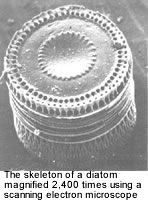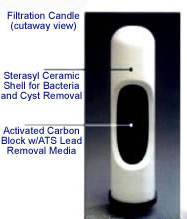Questions & Answers about the Four and Six Stage Ceramics

|
|
|
When does a ceramic filter element need cleaning? |
|
How do I clean a filter candle? |
|
My filter candle blocks up too regularly, what can I do about it? |
|
When does a ceramic filter element need replacing? |
|
I don’t have a flow meter to gauge the amount of water that my filter has treated. How can I estimate how much water has passed through the filter? |
|
Do I need to sterilize the candle after cleaning? |
|
How do I keep my filter housing clean? |
|
What happens if I leave the filter unused for a period of time? |
|
What is the difference between temporary and permanent hardness in water? |
|
Will my CWF filter element remove hardness? |
|
Will hardness affect the performance of a 4 stage ceramic filter element? |
|
Will my CWF filter element remove Aluminum? |
|
Will my CWF filter element remove Arsenic? |
|
Will my CWF filter element remove all types of bacteria? |
|
Will my CWF filter element remove Chloramine? |
|
Will my CWF filter remove diesel, petroleum or MTBE? |
|
Will my CWF filter element remove Fluoride? |
|
Will my CWF filter element remove Iron? |
|
Will my CWF filter element remove Legionella? |
|
Will my CWF filter element remove Manganese? |
|
Will my CWF filter element remove Nitrates? |
|
Will my CWF filter element remove Oestrogen and Synthetic Oestrogen? |
|
Will my CWF filter element remove Pseudamonas aeroginosa? |
|
Why does the pH of my drinking water increase when I use my ceramic filter? |
|
What level of bacterial contamination can the ceramic cope with before I need to use something else? |
|
Q1) When does a ceramic filter element need cleaning?A1) Once the flow out of the filter becomes noticeably less than normal.Q2) How do I clean a filter candle?A2) Use a scouring pad (similar to 3M “Scotchbrite”). Ensure that the end of the plastic mount does not come into contact with unfiltered water and dirty hands. Rubber gloves are recommended to be used during cleaning and NEVER use soap or detergents! |
|








